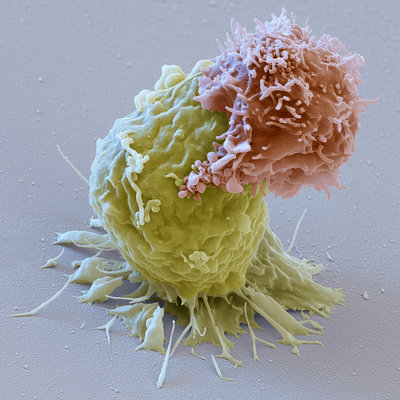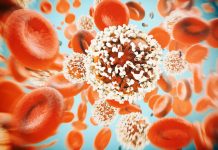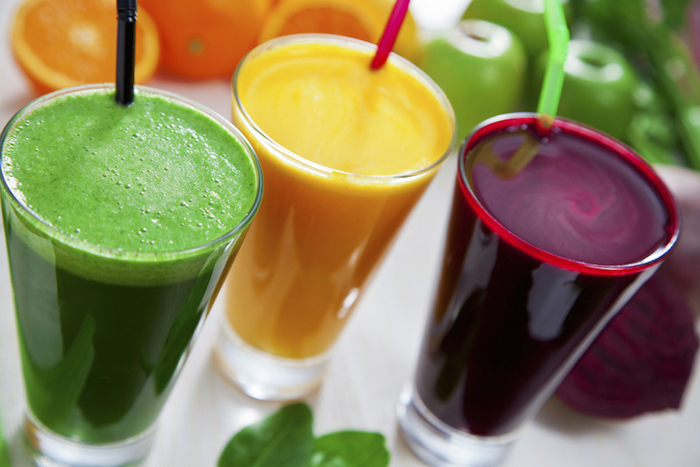Few foods are as cool as a cucumber. These low-calorie veggies contain many nutritional benefits, including hydrating properties and valuable nutrients.
There are hundreds of varieties of cucumber, and they come in dozens of colors, but the edible types are classified as being for either slicing or pickling, according to Cornell University’s Growing Guide. Slicing cucumbers are cultivated to be eaten fresh, while pickling cucumbers are intended for the brine jar. Slicing cucumbers are usually larger and thicker-skinned than pickling ones.
In the United States, commonly planted varieties of slicing cucumber include Dasher, Conquistador, Slicemaster, Victory, Comet, Burpee Hybrid and Sprint, according to the World’s Healthiest Foods website. Commonly planted varieties of pickling cucumber include Royal, Calypso, Pioneer, Bounty, Regal, Duke and Blitz.
While most people think of cucumbers as vegetables, they are actually a fruit. They contain seeds and grow from the ovaries of flowering plants. Cucumbers are members of the plant family Cucurbitaceae, which also includes squashes and melons. The most common type of slicing cucumber found in a grocery store is the garden cucumber, Cucumis sativus, according to World’s Healthiest Foods.
Nutritional profile
Cucumbers are good sources of phytonutrients (plant chemicals that have protective or disease preventive properties) such flavonoids, lignans and triterpenes, which have antioxidant, anti-inflammatory and anti-cancer benefits, according to World’s Healthiest Foods.
“We should definitely seek out foods that are nutrient-rich, using the positive approach of what to put on your plate vs. what to keep off,” said Angela Lemond, a Plano, Texas-based registered dietitian nutritionist and spokesperson for the Academy of Nutrition and Dietetics. The peel and seeds are the most nutrient-dense parts of the cucumber. They contain fiber and beta-carotene. “Beta carotene is an antioxidant that helps with immunity, skin, eye and the prevention of cancer,” said Lemond. A study published in the Pakistan Journal of Nutrition found that cucumber seeds were a good source of minerals, and contained calcium.
“Cucumbers are naturally low in calories, carbohydrates, sodium, fat and cholesterol,” said Megan Ware, a registered dietitian nutritionist in Orlando, Florida. There are just 16 calories in a cup of cucumber with its peel (15 without). You will get about 4 percent of your daily potassium, 3 percent of your daily fiber and 4 percent of your daily vitamin C. They also “provide small amounts of vitamin K, vitamin C, magnesium, potassium, manganese and vitamin A,” Ware said.
Here are the nutrition facts for cucumbers, according to the U.S. Food and Drug Administration, which regulates food labeling through the Nutritional Labeling and Education Act:
| Nutrition Facts
Cucumber, with peel, raw Calories 8 *Percent Daily Values (%DV) are based on a 2,000 calorie diet. |
||||
| Amt per Serving | %DV* | Amt per Serving | %DV* | |
| Total Fat 0g | 0% | Total Carbohydrate 2g | 1% | |
| Cholesterol 0mg | 0% | Dietary Fiber 0g | 0% | |
| Sodium 1mg | 2% | Sugars 0g | ||
| Protein 0g | ||||
| Vitamin A | 1% | Calcium | 1% | |
| Vitamin C | 2% | Iron | 1% | |
Health benefits of cucumbers
Hydration
Cucumbers are 95 percent water, according to Ware. This makes cucumbers a great way to stay hydrated, especially during the summer. A cup of cucumber slices is “nearly as thirst-quenching as a glass of water,” according to Eating Well magazine.
“They say we can get 20-30 percent of our fluid needs through our diet alone, and foods like these certainly help,” added Lemond. “Not only are they high in water content, they also contain important nutrients that play a part in hydration like magnesium and potassium.”
The anti-inflammatory compounds in cucumbers help remove waste from the body and reduce skin irritation, according to the Cleveland Clinic. Preliminary research also suggests cucumbers promote anti-wrinkling and anti-aging activity, according to an article in the journal Filoterapia.
Cancer prevention
Cucumbers contain two phytonutrient compounds associated with anti-cancer benefits: lignans and cucurbitacins. In recent years, pharmaceutical companies have been paying special attention to cucurbitacins, hoping to use them in new cancer drugs. According to a 2010 research review published in Scientific World Journal, scientists have found that cucurbitacins can help block the signaling pathways that are important for cancer cell proliferation and survival.
Cucurbitacins can also inhibits the growth of pancreatic cancer cells, according to a 2009 study published in the Journal of Cancer Research looked at cucurbitacin B (which cucumber contains) on human pancreatic cancer cells and found that cucurbitacin supplements inhibited the growth of seven pancreatic cancer cell lines by 50 percent, and also increased apoptosis, or “death by suicide,” of pancreatic cancer cells.
According to World’s Healthiest Foods, lignans may protect against cancer through working with the bacteria in the digestive tract. The bacteria take the lignans and convert them into compounds such as enterodiol and enterolactone, which can bind onto estrogen receptors and possibly reduce the risk of estrogen-related cancers, such as ovarian, breast, endometrial and prostate cancers. The research is not yet clear on whether lignans actually assert anti-cancer benefits.
A 2009 meta-analysis published in the British Journal of Cancer found little or no association between lignan intake and reduced breast cancer risk. Similarly, most studies have not found significant correlations between lignan intake and reduced prostate cancer risk, according to the Linus Pauling Institute at Oregon State University, though one study of older Scottish men published in the British Journal of Nutrition showed that consuming an enterolactone-containing serum reduced the risk of prostate cancer.
On the other hand, a Journal of Nutrition study of nearly 800 American women found that those with those with the highest lignan intake had the lowest risk of ovarian cancer. Furthermore, a study published in the Journal of the National Cancer Institute looked at nearly 1,000 women in the San Francisco area and found that postmenopausal women with the highest lignan intakes had the lowest risk of endometrial cancer.
Skin
You’ve probably seen pictures of people at a spa relaxing with cucumber slices over their eyes. It turns out there’s science behind this pampering ritual. Ware explained, “Cucumbers have a cooling and soothing effect that decreases swelling, irritation and inflammation when used topically. Cucumber slices can be placed on the eyes can decrease morning puffiness or alleviate and treat sunburn when placed on the affected areas.” She also noted that high vegetable intake is associated with a healthy complexion in general.
Bone health
According to the University of Maryland Medical Center, in the past few decades, it has become clear that vitamin K is important to bone health, and one cup of cucumber contains about 19 percent of the recommended daily intake of vitamin K. One review published in Nutrition noted that vitamin K intake might reduce fracture rates, work with vitamin D to increase bone density and positively affect calcium balance.
The human body uses vitamin K when building bones, and the effects seem to be especially important for women. A large 2003 American Journal of Clinical Nutrition study showed that low vitamin K levels were associated with low bone density in women, but not in men. Another study published in the American Journal of Clinical Nutrition in 1999 found that low intakes of vitamin K were associated with an increased risk of hip fractures in middle-age women. This is especially interesting because the women saw results from eating lettuce, showing that dietary consumption of vitamin K via eating vegetables (not supplements) is beneficial. When it comes to men, the affects of vitamin K and bone health may become more apparent as they age: A 2000 study saw reduced risk of hip fracture among both elderly women and elderly men who consumed more vitamin K.
Antioxidants
“Foods that are high in antioxidants allow your body to function optimally. Antioxidants help prevent damage and cancer,” Lemond said.
Cucumbers contain several antioxidants, including vitamin C, beta-carotene and manganese, as well as flavonoids, triterpenes and lignans that have anti-inflammatory properties. Vitamin C is well known for its immune system benefits, and beta-carotene has been shown to be beneficial for vision, according to the Mayo Clinic.
According to a 2010 animal study published in the Journal of Young Pharmacists, fresh extracts from cucumber showed increased scavenging of free radicals. Free radicals are associated with a variety of human diseases, but can sometimes be held in check by antioxidants, according to the Pharmacognosy Review.
Another study of cucumber extracts in animals, published in the Archives of Dermatological Research, found increased overall antioxidant benefits. Though this study focused on the cosmetic applications of this use of cucumbers, decreased free radicals can improve your inside organs as well as your skin.
An additional study published in Current Pharmaceutical Design found a positive association between the triterpene cucurbitacin and reduced inflammation, particularly in cancer cells. A review of triterpenes on the immune system, published in the Journal of Ethnopharmacology, suggested that they can help with inflammation and encouraged future research.
Heart health
“Eating a variety of fruits and vegetables of all kinds is associated with a reduced risk for many health conditions, such as heart disease, diabetes, stroke and obesity,” said Ware. Cucumbers’ potassium content may be especially helpful in this regard. One cup of sliced cukes contains only about 4 percent of the body’s daily potassium needs, but it comes with significantly fewer calories than most high-potassium foods like bananas. Potassium is an essential part of heart health, according to the American Heart Association. A study of 12,000 adults, published in Archives of Internal Medicine, showed that those who consumed 4,069 mg of potassium each day lowered their risk of cardiovascular disease and ischemic heart disease by 37 percent and 49 percent, respectively, compared to those who took 1,793 mg per day.
Several studies have linked cucumber consumption to reducing hypertension. Many studies have linked it with lower blood pressure because it promotes vasodiliation (widening of the blood vessels), according to Today’s Dietitian. A 2017 study published in Public Health of Indonesia found that elderly participants with hypertension saw a significant decrease in blood pressure after consuming cucumber juice for 12 days. Additionally, a 2009 review in Indian Academy of Clinical Medicine suggested that hypertension sufferers incorporate cucumbers into their diets because of the fruit’s low sodium content.
The vitamin K in cucumbers is also known to be essential in the blood-clotting process, according to the Harvard School of Public Health.
Digestion
A 2013 review in Fitoterapia noted that cucumbers might help relieve constipation because they provide both fiber and water. Tufts University notes that cucumbers can pack even more of a digestive punch if they are turned into pickles during a home-fermentation process. Cucumber pickles contain probiotic bacteria that promote healthy digestion and cultivating beneficial gut flora. Store-bought pickles usually do not have these bacteria because they have been boiled out.
Weight loss
Cucumbers are a low-calorie food therefore a popular ingredient in diet meals. A 2011 study in the journal Obesity found that greater water consumption correlated with more weight loss in middle-age and older adults. Participants who consumed 1 pint (500 milliliters) of water prior to eating a meal lost an average of 4 lbs. (2 kilograms) more than participants who did not. Snacking on water-dense foods like cucumbers can be an effective way to up water intake.
But Lemond cautions against relying too much on water-dense foods like cucumber. “We know that people that eat higher quantities of fruits and vegetables typically have healthier body weights. However, I do not recommend eating only cucumber. You will lose weight, but that weight will be mostly muscle,” she said.
Brain health and memory
Recently, scientists have taken interest in the flavonoid fisetin. Cucumbers are a good source of fisetin, which studies have associated with protecting nerve cells, improving memory and decreasing the risk of Alzheimer’s in mice, according to a 2013 review in the journal of Antioxidants & Redox Signaling. The same review found promising results for the relationship between fisetin and cancer prevention.
Risks of eating cucumbers
There can be a few risks from eating cukes. Pesticide consumption is one concern. Ware explained, “The Environmental Working Group produces a list each year of fruits and vegetables with the highest levels of pesticide residue, known as the Dirty Dozen. Cucumbers are one of the fruits and vegetables that the Environmental Working Group has placed on its Dirty Dozen list, meaning the exposure to pesticide residue is high.”
Additionally, cucumbers may be waxed to help protect them during shipping. According to World’s Healthiest Foods, both organic and conventionally grown cukes may be waxed, but organic ones can only use non-synthetic waxes with chemicals approved under organic regulations. For this reason and the pesticide concerns, World’s Healthiest Foods encourages buying organic cucumbers. But Ware stipulated, “This does not mean you should avoid cucumbers altogether if you can’t find or afford organic. The nutritional benefit of eating conventionally grown produce outweighs the risk of not eating produce at all.”
Healthy as they are, you don’t want to overdo it on cucumbers, said Lemond. “My recommendation is always to vary your selections. Cucumbers are great hydrating foods, so keep them in along with other plant foods that offer other benefits. Variety is always key.”
Pickles
Pickling is a method of preserving food — and not only cucumbers — to prevent spoiling. There are two basic types of pickles: fermented and non-fermented, according to the World’s Healthiest Foods.
Fermented pickles have been soaked in brine, which is water that has been saturated with salt. The word “pickle” comes from the Dutch word pekel, which means brine. Brines can also contain other ingredients, such as vinegar, dill seed, garlic and lime.
Dill pickles are brined with dill added to the solution, obviously. Kosher dills are brined with dill and garlic. “Kosher” in this case does not necessarily mean the cucumbers have been prepared according to kosher dietary laws, however; it just means garlic has been added to the brining process, according to the World’s Healthiest Foods.
Gherkin pickles are usually just immature cucumbers, according to Cornell University.











































